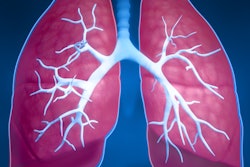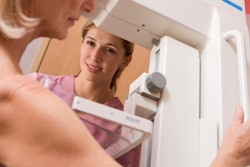
With millions of women presenting for mammography screening each year, the exam offers radiology departments a chance to promote a variety of additional preventive health services, such as flu vaccinations or colorectal cancer screening, according to a study published July 27 in the Journal of the American College of Radiology.
And in a healthcare delivery environment that places more and more emphasis on value-based care, this opening gives radiologists a way to show that the specialty can help improve overall population health metrics, wrote a group led by Dr. Anand Narayan of Massachusetts General Hospital.
"As healthcare payment systems transition from fee-for-service to bundled payments, there is an increasing opportunity for radiologists to collaborate to improve population-based healthcare outcomes," the group wrote.
For the study, Narayan and colleagues used data from the U.S. Centers for Disease Control and Prevention's 2014 Behavioral Risk Factor Surveillance System survey, which included 122,434 women between the ages of 40 and 74 without a history of breast cancer who had undergone a mammogram within the past two years. The team defined adherence to recommended preventive services based on U.S. Preventive Services Task Force (USPSTF) guidelines applicable at the time the survey respondents participated and calculated the proportion of eligible women who had obtained other preventive health services.
Of the women who participated in the survey, the researchers found the following:
- 49.2% received recommended flu vaccines.
- 69.5% received penumoccocal vaccines.
- 74.8% underwent colorectal cancer screening.
- 93.2% underwent cervical cancer screening.
Women with lower levels of education and income and those who lacked health insurance or a personal doctor were less likely to report having received recommended preventive health services, the group noted.
The study findings suggest that when women present for screening mammography, radiologists could encourage them to seek additional preventive services, perhaps by offering educational materials at the imaging center or using electronic health records to identify patients due for other services and then help schedule them, according to Narayan's team. Radiology departments could even organize imaging centers so that patients could obtain other preventive services during the same visit as their screening mammogram.
Although this kind of activity has tended to be beyond radiology's typical scope, it is in line with the American College of Radiology's Imaging 3.0 initiatives, which encourage radiologists to work with other clinicians to improve population-based health, the group wrote.
"Survey results indicate that large proportions of women presenting for mammography have not obtained a wide variety of recommended preventive health services, suggesting ample opportunities for radiology practices to take a step forward in providing value-based, patient-centered care," the team concluded.



















